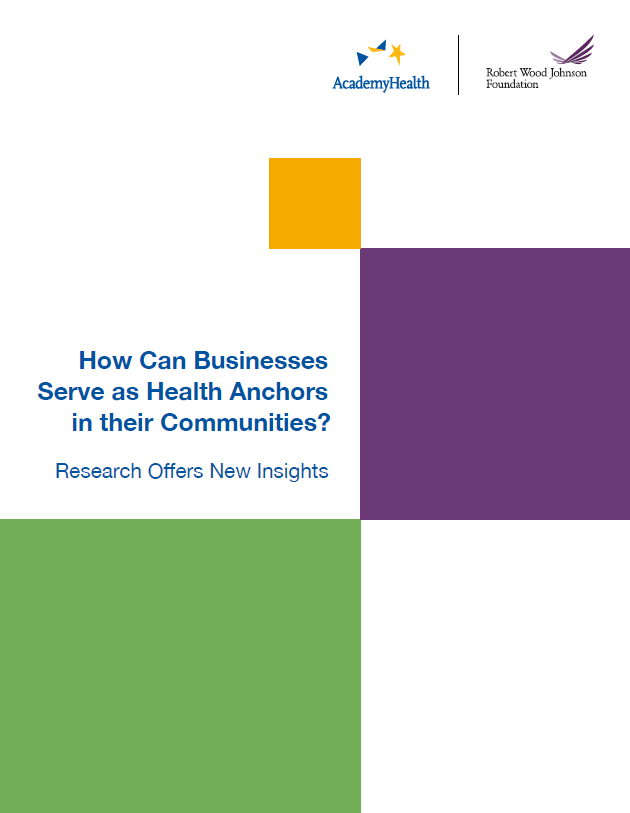
How Can Businesses Serve as Health Anchors in their Communities? Research Offers New Insights
This brief summarizes research that examined how and why for-profit businesses might use anchor approaches in the communities where they are located by investing in health and well-being.
Over the past several years, the Robert Wood Johnson Foundation (RWJF) has worked to build the evidence base for how for-profit businesses can drive a Culture of Health and well-being in communities where their employees and customers live, work, and play. Traditionally, the term “anchor institution” has been used to describe universities, nonprofit hospitals, and foundations who are tied to the community by way of mission, capital investments, or customer base and have made investments to improve community conditions. Businesses often have deep community ties too, but less is known about the extent to which they employ anchor approaches to advance community health and equity. A portfolio of RWJF investments, including a research program managed by AcademyHealth, examined how businesses might fill an anchor institution role and invest in community health and well-being.
Key takeaways from this research include:
- When business invests in community health, it generates returns, including improvements to human capital, real estate values and customer acquisition and loyalty.
- Businesses can take several approaches to community health investment— from financing, land donation, and sharing of technical expertise to workforce development, diversity, equity, inclusion and justice initiatives, and policies that promote public health.
- Philanthropy, government, community economic development, and research institutions have an important role to play in catalyzing business investments in community health. They can build relationships with businesses, educate and advise businesses, support policies and programs that create financial incentives for businesses, and develop standardized impact measures that businesses can use.
This document summarizes key findings across this research published in 2021 and 2022. Research grantees included the American Heart Association, Initiative for a Competitive Inner City (ICIC), Mass Economics & RW Ventures, LLC, Northwestern University, Ohio State University, and RAND Corporation.